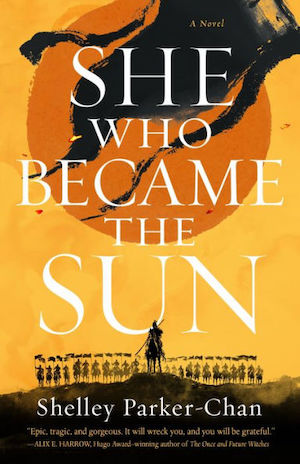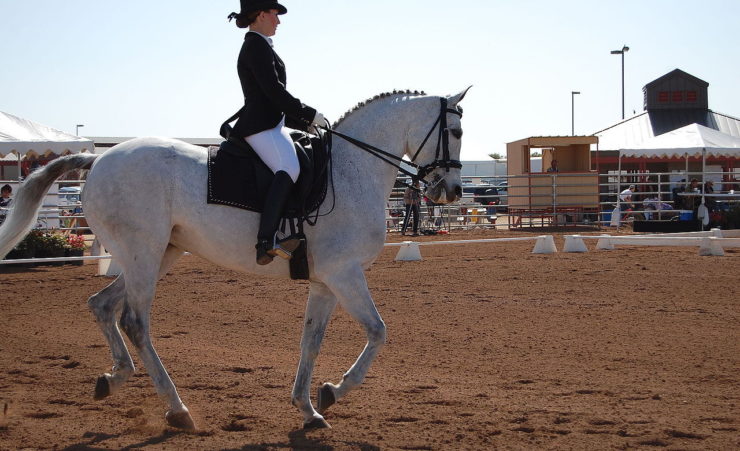Time was, and not that long ago either, when Olympic dressage was one of those sports that mostly got the reaction: Why? A search on “dressage is like watching paint dry” gets over 10 million results. The near-universal reaction has been that it’s bo-RING.
And then came 2021 and the Pandemic Olympics and the most unexpected people have concluded that, hey, dressage is cool. It’s horses doing these extreme dance moves. It’s like, wild. In a highly controlled dancey sort of way.
When Snoop Dogg thinks you’re cool, you have arrived.
But what is this thing really? It’s tricks, right?
Well. Actually. No. It’s all things horses do on their own, when they’re happy or excited or feeling full of themselves. The real trick is to persuade them to do it on command and in rhythm and balance and harmony. To dance with a human partner, either through a series of prescribed movements in prescribed order (known as tests) or through a series of movements determined by the level the horse is at, choreographed to music (known as freestyle). It’s a fair bit like figure skating, and a good bit like gymnastics.
The tests are the paint-drying portion. To aficionados of the sport, the extreme fine points of each horse in each test are the thing of great fascination and minute examination. To the rest of the world, it’s the same thing over. And over. And Over. And. Over.
It’s the freestyle that gets to be fun. For a long time, the judges wanted classical music, tight restraint, nothing too out there, i.e., modern or popular. In recent years however, that’s opened up. And that’s when dressage started to become cool. Non-experts can appreciate a routine set to Beyoncé. When it’s a horse doing it, with a rider in top hat and tails, it’s almost like cognitive dissonance, but in a good way.
I remember when the powers that be in dressage talked about how to keep the sport from sinking into oblivion. There was no freestyle at that time, just the tests: at Olympic level, kind of like figure skating, with short and long form. Every horse did the exact same routine in the exact same order, with suitably abstruse scoring (and plenty of favoritism for certain stars and certain national teams).
Adding the freestyle was as much a marketing decision as anything else. Open it up, set it to music, let the movements flow in whatever order worked best for the horse and rider. Letting the routines be set to popular music was a no-brainer, though of course it took a while, because stodgy ancient sport in a top hat.
So here we are. Dressage is cool. And I’m there for it.
What’s really interesting to me as a longtime and recovering dressage rider is that instead of ruining the technical basis of the sport-and-art, this shift has if anything sent horses and riders back to the roots. There was a too-long period of fashions and fads that added up to what we called “crank-and-jam,” forcing horses into a set configuration or frame and breaking down far too many, sometimes fatally. It was fast, it was forceful, it took over the top of the sport. And it was a ruddy disaster for the horses.
Buy the Book


She Who Became the Sun
Meanwhile there was another kind of training that had been there all along, as in centuries’ worth. Slower, more gradual, less coercive. Done right, it resulted in horses that were still performing to a high level in their twenties and even thirties, instead of retiring just shy of breakdown around age 16 or 17. It asked a lot of riders, asked them to be patient, to be quiet with their signals (called aids—leg, hand, seat in the saddle), to focus on relaxation first and let everything follow from that.
It’s hard to be that patient in a high-dollar sport. It’s so much cheaper to just ram them along and get them out there and winning as early as possible, instead of taking five to ten years to get anywhere. And yet, that’s what’s been happening more and more, with more and more riders and teams choosing that route instead of the more forceful one.
And oh yes, it really does that that long to build a horse up to Olympic level. It’s very demanding, very precise, very exacting; it takes thousands of hours of practice and years of conditioning. The horse has to be at the peak of fitness, to be totally focused on the rider, to be trained with the utmost of precision.
And that’s not even talking about the rider. Riding a top horse is like flying a fighter jet. The controls are that complex, and the horse is that responsive. He’s also, at that level, probably very big, with very big, bouncy, powerful movement that the rider has to sit to without boinging right out of the saddle, while executing complex and precise commands with as little push and pull as possible. A lot of what’s going on up there is as subtle as the release of a breath or the lift of a seatbone. The rider has to have tremendous core strength and flexibility, and be extremely well balanced and extremely sensitive to every slightest movement of the horse.
On top of all of that, it’s two living beings working together in a very high-level form of dance. There are plenty of riders who treat their horses like sports equipment, but plenty more whose horses mean as much to them as Ginger did to Fred. I was charmed and delighted to stop by the facebook page of the individual gold medalist, Jessica von Bredow-Werndl. She’s German and young, and her page is full of her loving on her horse Dalera. She adores the horse, and she’s so proud of all the people who helped her get to where she is. What’s most telling to me that one of them is her longtime teacher, who is an Oberbereiter, a Chief Rider of the Spanish Riding School of Vienna.
Twenty or thirty years ago, that would not have been thinkable. Vienna is the ultimate manifestation of old school, as in, sixteenth century. It’s a fossil, we were told back then, totally out of date, using these chunky little antique horses with precious little movement, and damn, they took forever to train.
And now here we are, with a student of one of the most classical of all classical riders, trained the old way in the new dressage world. She’s not the only one, either. One of the US team, Sabine Schut-Kery, first came to my attention in the Nineties when she was head trainer at Proud Meadows in Texas, performing with teams of Friesians (aka Ladyhawke horses) and Lipizzans (aka the Fat White Ponies of Vienna). She’s as classical as they make ’em, even more so than viral dance master Steffen Peters, and she helped bring home a historic silver medal for the US team.
It’s good news for the sport that dressage is cool. It’s good news for the horses that classical dressage is also cool. It’s much easier on them without sacrificing the quality of the work. It keeps them sounder longer, and it keeps them happier. That’s where those viral dance routines are coming from. Happy horse with quieter, more sensitive rider. I hope it stays in fashion for many years to come.
Judith Tarr is a lifelong horse person. She supports her habit by writing works of fantasy and science fiction as well as historical novels, many of which have been published as ebooks. She’s written a primer for writers who want to write about horses: Writing Horses: The Fine Art of Getting It Right. She lives near Tucson, Arizona with a herd of Lipizzans, a clowder of cats, and a blue-eyed dog.










